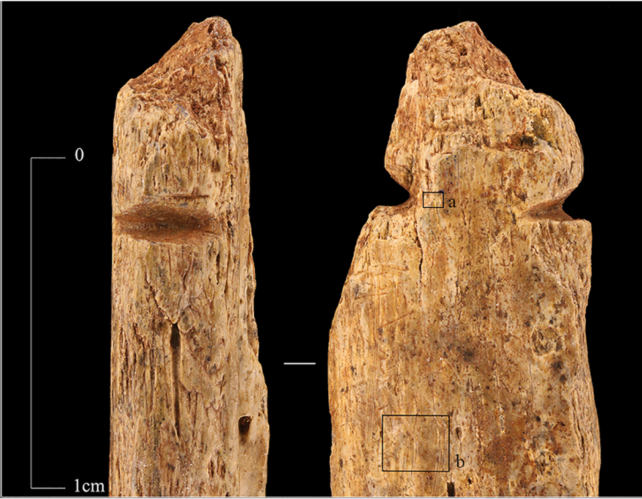Several small, slender pendants uncovered from Stone Age graves on an island in a Russian lake more than 80 years ago have been reimagined after archaeologists reanalyzed the finds using chemical fingerprinting techniques.
"To our surprise, the raw material of some of the specimens turned out to be human bone," archaeologist Kristiina Mannermaa of the University of Helsinki in Finland and colleagues write in their published paper.
Mannermaa was part of a team responsible for another landmark investigation into Stone Age culture, uncovering the remains of a child whose elaborate grave – in what is today Finland – was layered with feathers and fur.
This latest tale of ancient grave goods reveals another part of Stone Age life preserved in death; it suggests people who lived thousands of years ago saw their lives as relatively equally important with the animals around them.
The bone pendants were found on Yuzhniy Oleniy Ostrov, an island on Lake Onega in northwest Russia, home to the largest cemetery in northern Europe from the latter part of the Stone Age, with 177 recorded burial sites.
Archaeologists first excavated the graveyard in the 1930s, but only with this latest analysis did researchers identify the origins of bone fragments fashioned into pendants found in six graves amongst ornamental teeth from elk, beavers, and even brown bears.
For more than eight decades, researchers studying burials on the island of Yuzhniy Oleniy Ostrov had overlooked the bone pendants because they were so unassuming.
With not much more than one or two grooves carved at the narrower end of the bone pendants, archeologists were instead drawn to teeth that were easier to identify which species they came from based on structural features.

Twelve of the 37 pendants sent for re-analysis were, it turned out, made from human – not animal – bone, with a further two questioned as potentially human and six of unidentifiable origin.
Using mass spectrometry, the researchers analyzed traces of proteins preserved in the buried ornaments to show a third were cut from human bone; the rest were made of elk and bovine bones.
Dated to over 8,200 years old, the human bone pendants are part of a long history of early humans crafting ornaments from bone.
The earliest evidence of human bone to fashion ornaments is a collection of perforated teeth found in France, dated to some 35,000 years ago, likely left behind by Aurignacians who moved through Europe at the time. Human tooth pendants from more recent times have also been found dotted throughout Denmark, Germany, Turkey, Latvia, and the Czech Republic.

Though the bone pendants from Yuzhniy Oleniy Ostrov were poorly preserved, fragmented, and worn away at the edges, spiral fractures in the bone suggest they were crafted from fresh bone rather than old burials.
Far afield in Mexico, remnants of musical rasps made from human bone have been found with cut marks on the bones indicating they were taken from fresh corpses, possibly sacrificial victims. No such evidence of ritual cannibalism was found on the Yuzhniy Oleniy Ostrov bone pendants, but it also can't be totally ruled out.
The human bone pendants were also not embellished in any way; they were roughly finished and indistinguishable from those made of animal bones until this latest analysis revealed their true origins.

The fact that human bone was treated as a raw material just like any other might indicate that animals and humans were very much intertwined in the worldview of Stone Age people, Mannermaa suggests.
If the type of bone used to make pendants was not of great importance, then perhaps the people who carved them saw little difference between humans and animals.
"Using animal and human bones together in the same ornament or clothing may have symbolized the ability of humans to transform into animals in their minds, in addition to which they believed that animals were capable of taking human form," Mannermaa says.
"We know that such blurring of forms and boundaries has been and still is part of the worldview of indigenous peoples."
The research was published in the Journal of Archaeological Science: Reports.
